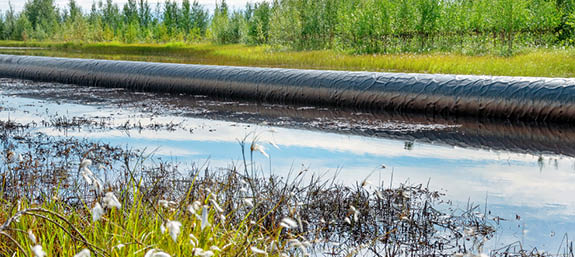Groundwater remediation is the process that is used to treat polluted groundwater by removing the pollutants or converting them into harmless products. Groundwater is water present below the ground surface that saturates the pore space in the subsurface. Globally, between 25 percent and 40 percent of the world’s drinking water is drawn from boreholes and dug wells. Groundwater is also used by farmers to irrigate crops and by industries to produce everyday goods. Most groundwater is clean, but groundwater can become polluted, or contaminated as a result of human activities or as a result of natural conditions.
The many and diverse activities of humans produce innumerable waste materials and by-products. Historically, the disposal of such waste has not been subject to many regulatory controls. Consequently, waste materials have often been disposed of or stored on land surfaces where they percolate into the underlying groundwater. As a result, the contaminated groundwater is unsuitable for use.
Current practices can still impact groundwater, such as the over-application of fertilizer or pesticides, spills from industrial operations, infiltration from urban runoff, and leaking from landfills. Using contaminated groundwater causes hazards to public health through poisoning or the spread of disease, and the practice of groundwater remediation has been developed to address these issues. Contaminants found in groundwater cover a broad range of physical, inorganic chemical, organic chemical, bacteriological, and radioactive parameters. Pollutants and contaminants can be removed from groundwater by applying various techniques, thereby bringing the water to a standard that is commensurate with various intended uses.
Removing pollution or contaminants from groundwater, surface water, or contaminated soil is what environmental remediation is all about. But to get the job done successfully, you’ll need to first understand the different cleanup methods and how they work. Here is a list of six proven methods:
1) Ground Water Pumping and Treatment: This method involves the extracting groundwater with a vacuum pump and then separating contaminants with techniques like carbon adsorption, biological treatment, and air stripping
2) Waste Water Treatment: This method removes contaminants from wastewater with techniques such as physical separation, chemical treatment, and biological treatment.
3) Bio-remediation: This method is a natural bio-degradation of contaminants by micro-organisms, which can be enhanced through the addition of nutrients or cultivation.
4) Incineration: This method uses extremely high temperatures to destroy organic compounds contained within the hazardous waste.
5) Thermal Desorption: This method utilizes high temperatures to heat contaminated soil, vaporizing volatile and semi-volatile organics (like mercury hydrocarbon), which are then either collected or treated with an afterburner.
6) Removal and Disposal: This method involves the physical removal of contaminated equipment, soil, water, sludge and/or tanks and transporting it to an approved hazardous waste disposal facility. If it turns out you need to go this route, Hazardous Waste Experts can help you with this. We’re experts at environmental remediation and hazardous and non-hazardous regulated waste disposal.

